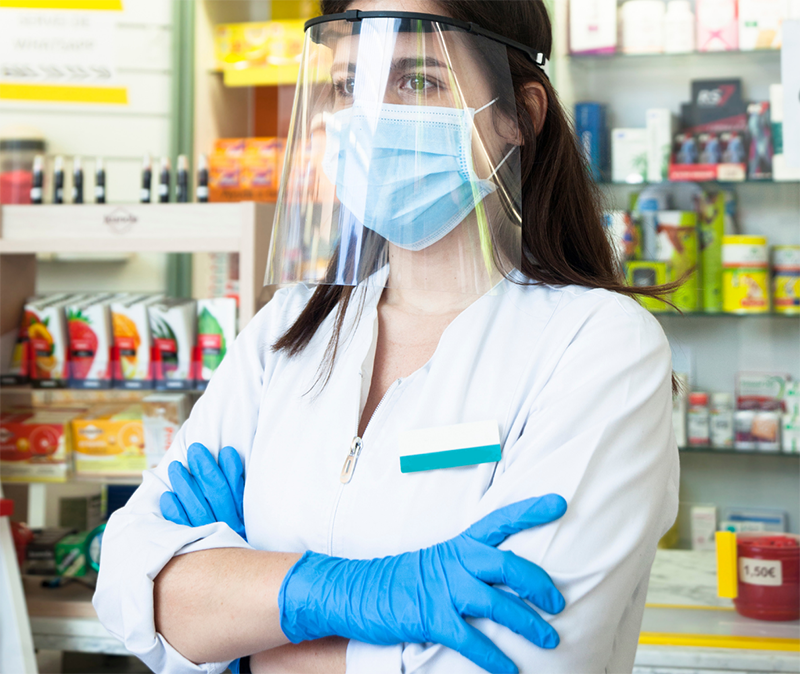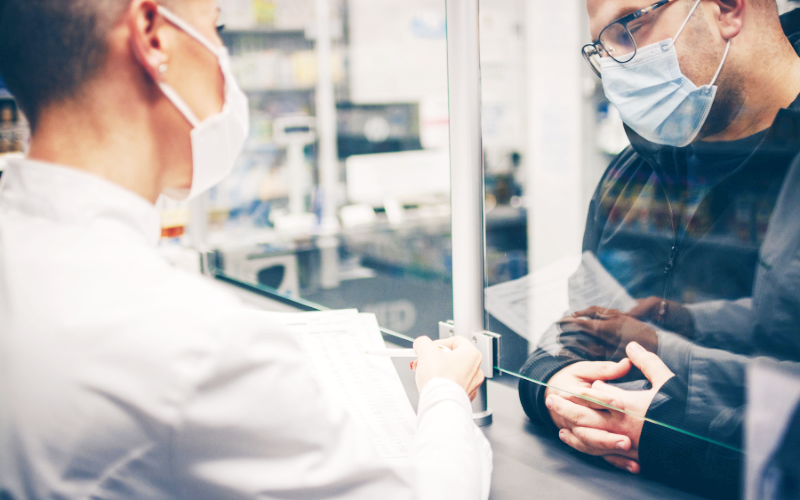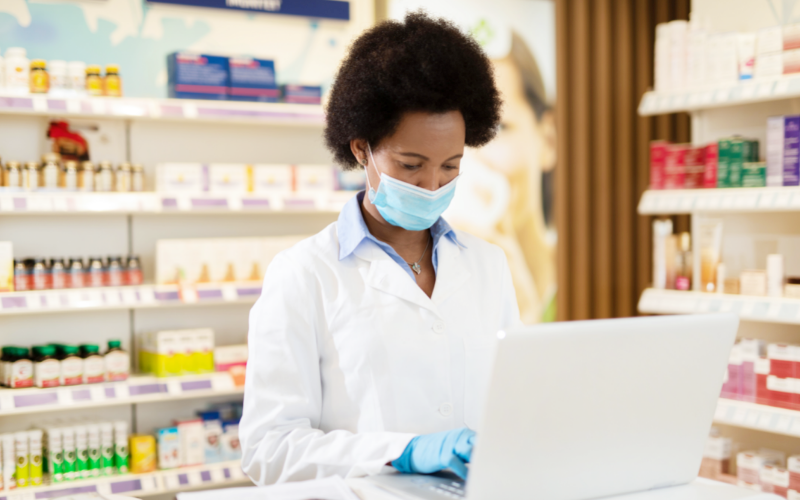When the COVID-19 pandemic hit the United States in March of 2020, it turned the pharmacy industry upside down, while simultaneously presenting unique challenges and opportunities for retail pharmacies and pharmacists. As patients became more hesitant to go to the hospital and primary care providers, or any clinical setting where close physical interaction was required for fear of contracting the virus, the local pharmacy quickly adapted to the role of frontline healthcare providers. While these changes started as circumstantial, it is likely that they will be here to stay.
With more than 90% of the United States population living within five miles of a community pharmacy, they are poised now more than even to serve as an epicenter for health-related services beyond the pandemic. However, there are lessons to be learned from the past thirteen months to further embrace change.

Creating a Touch-Less Environment
Pre-pandemic, retail pharmacy staff operated within close quarters and shoulder-to-shoulder with others – counting and packaging prescriptions and counseling patients. Limited space behind the counter might have been an inconvenience in the past, but with social distancing guidelines, the need for a better and more efficient workflow within the pharmacy is now a requirement and will continue to be for some time. With new six-feet apart restrictions and the need for less “touches” across surfaces to reduce the risk of spreading the virus, pharmacies are looking for innovative ways to keep their staff and patients healthy – queue automation.
Automation technology is one valuable asset in the ability to achieve the new and necessary level of safety protocols and precautions. With technology performing redundant tasks including counting and packaging pills while pharmacists spend time counseling patients – the compact pharmacy design allows more space for physical distancing and less human touches on the prescriptions. Similarly, automation allows for streamlined efficiencies and double checking fills creates a better workflow, meaning staff can be allocated in other areas of the pharmacy, focusing on clinical initiatives or business growth.

Continuing to Elevate the Role of Pharmacists
As the number of pharmacies receiving COVID-19 vaccines has expanded to 40,000, the opportunity for pharmacists to practice at the top of their license and take their positions as frontline health workers increased. With people more hesitant to seek care from their local providers and entering the hospital, pharmacists have worked tirelessly to fill these gaps of care. Pharmacists and staff have added a whole new set of tasks that will require their time, especially as the Pfizer and Moderna vaccines require two doses, essentially making each vaccination a two-part effort. While vaccinations are on the fore-front of pharmacists daily tasks today, the other routine operations are still there requiring attention – patient counseling, prescription filling, medication synchronization programs, phone calls, and important everyday activities that don’t just stop. As people return to engaging their clinical providers and resuming in-person appointments, there is likely to be an uptake in new prescriptions coming into pharmacies that will require additional attention. So, how do they keep up with all the tasks requiring their attention? Technology.
With packaging, counting, and checking can easily be handled by pharmacy automation technology – these machines can run quietly in the background, allowing more time for pharmacists to handle clinical duties including vaccinations and patient counseling. With the automation handling these tasks, time can be reallocated to handling these efforts, moving patients quickly through their appointment and out of the pharmacy to streamline workflow and adhere to social distancing standards.

Adapting to Handle Change
With automation freeing up staff time, pharmacists can also put the business at the forefront. Time savings permits the opportunity to plan and implement value-add programs for business. Staff can participate in clinical trainings, speak with patients leading to word of mouth referrals, increase relationships within the community – including with SNF, LTC, or primary care providers, and ultimately, find ways to continue putting patients and the community first.
Moving forward, many customers will likely continue to rely on brick and mortar pharmacies. However, there are ways in which pharmacies can adapt to ensure the most efficient and convenient care and services. By incorporating drive-through or delivery services, customers can choose how they wish to obtain their medications – allowing tailored care for each customer.
Similarly, adding additional services can help ensure communities stay adherent to their medications throughout a pandemic and beyond. Automation can help ensure pharmacies are able to handle tasks successfully and efficiently, with faster fills and verification checks, and a machine to count, cap and label. Almost immediately, pharmacies will be able to see a return on investment with automation, including with new services, especially as the customer base grows.
Moving Onwards and Upwards
Taking notes from what has transpired over the last year and combining these lessons with helpful tools, including automation can allow pharmacy businesses to capitalize on patient care and hold the position as frontline healthcare providers. The goals of pharmacists have never changed – putting patients first and keeping communities healthy and safe, but now so more than ever, the industry is pushing the pharmacist’s status forward. With the help of technology, the role of a pharmacist and the direction of their business can continue to move upwards.
